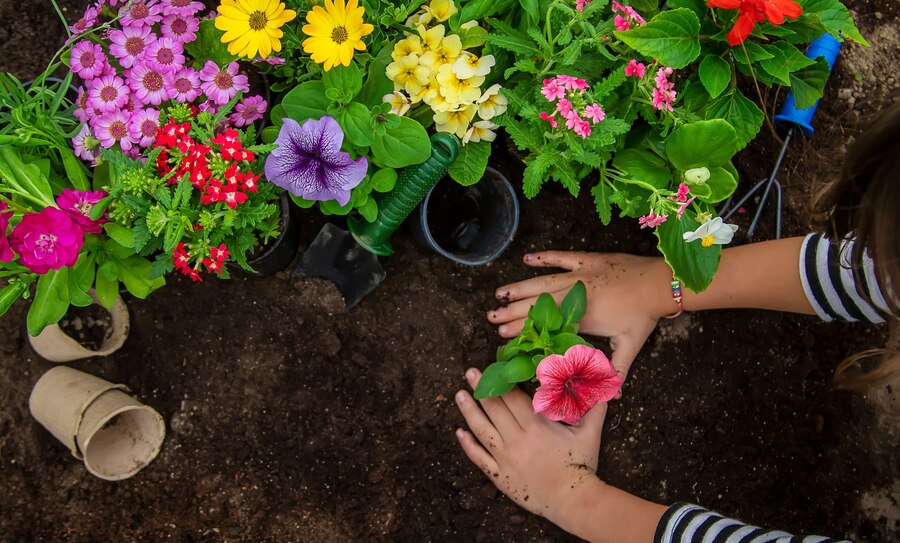Introduction
Welcome to the vibrant world of flower gardening in Jaipur, where the colors of nature blend seamlessly with the rich cultural heritage of the Pink City. Whether you’re a seasoned gardener or just starting out, cultivating a stunning flower garden in Jaipur can be a rewarding experience. In this guide, we’ll delve into expert tips and tricks tailored specifically for Jaipur's unique climate and soil, helping you create a flourishing oasis of blooms right in your backyard. Explore exciting flower gardening ideas in Jaipur that will transform your outdoor space into a vibrant paradise.
Understanding Jaipur’s Climate and Soil
Before diving into specific gardening tips, it’s crucial to understand Jaipur’s climate and soil characteristics. Jaipur experiences a semi-arid climate with hot summers and mild winters. The soil is predominantly sandy with low water retention, making it essential to choose plants that can thrive in such conditions. Additionally, Jaipur receives most of its rainfall during the monsoon season, so water conservation techniques play a vital role in sustainable gardening practices.
Selecting the Right Flowers
-
Drought-Tolerant Varieties: Opt for flowers such as Portulaca, Zinnia, and Marigold that are well-suited to Jaipur’s dry climate and require minimal watering once established.
-
Heat-Resistant Plants: Choose heat-resistant varieties like Vinca, Bougainvillea, and Gazania that can withstand Jaipur’s scorching summers without wilting.
-
Monsoon Bloomers: Include monsoon bloomers like Cosmos, Lantana, and Rain Lily to add bursts of color during the rainy season and make the most of natural rainfall.
-
Native Plants: Embrace native plants like Gulmohar (Delonix regia), Ashoka (Saraca asoca), and Palash (Butea monosperma) that are well-adapted to Jaipur’s soil and climate, requiring less maintenance.
Preparing the Soil
-
Improving Soil Structure: Amend sandy soil with organic matter such as compost, vermicompost, and aged manure to improve water retention and nutrient levels.
-
Mulching: Apply a layer of organic mulch such as straw or shredded leaves to conserve moisture, regulate soil temperature, and suppress weed growth.
-
Balancing pH Levels: Test soil pH and adjust if necessary to create an optimal growing environment for your chosen flowers.
Watering Techniques
-
Deep Watering: Water deeply and less frequently to encourage deep root growth and drought tolerance in plants.
-
Watering Schedule: Water early in the morning or late in the evening to minimize evaporation losses and ensure efficient water uptake by plants.
-
Drip Irrigation: Install a drip irrigation system for precise and water-efficient watering, targeting the root zones of plants without wastage.
Pest and Disease Management
-
Companion Planting: Utilize companion planting techniques to deter pests naturally, such as planting marigolds to repel nematodes or basil to deter mosquitoes.
-
Organic Pest Control: Use organic pest control methods like neem oil spray, garlic spray, or introducing beneficial insects such as ladybugs and lacewings to control pests.
-
Monitor Regularly: Inspect plants regularly for signs of pests or diseases, and take prompt action to prevent outbreaks and minimize damage.
Seasonal Care Tips
-
Summer Care: Provide shade or use shade cloth during intense summer heat, mulch to retain soil moisture, and water deeply but less frequently to prevent water stress.
-
Monsoon Maintenance: Ensure proper drainage to prevent waterlogging, trim overgrown plants to improve air circulation, and watch for fungal diseases in humid conditions.
-
Winter Preparations: Protect tender plants from frost or cold winds by covering them with frost cloth or bringing containers indoors, and reduce watering frequency in cooler temperatures.
Garden Design and Maintenance
-
Color and Texture: Plan your garden layout to incorporate a variety of flower colors, heights, and textures for visual interest throughout the year.
-
Deadheading and Pruning: Regularly deadhead spent flowers and prune overgrown branches to promote continuous blooming and maintain plant health.
-
Fertilization: Use organic fertilizers sparingly during the growing season, following recommended application rates to avoid nutrient imbalances or burn.
Conclusion
By applying these expert tips and tricks tailored for Jaipur’s climate and soil conditions, you can create a stunning and sustainable flower garden that thrives throughout the seasons. Remember to observe your plants closely, adapt care practices as needed, and enjoy the beauty and tranquility of your blooming oasis in the heart of Jaipur. Happy gardening!


No comments yet